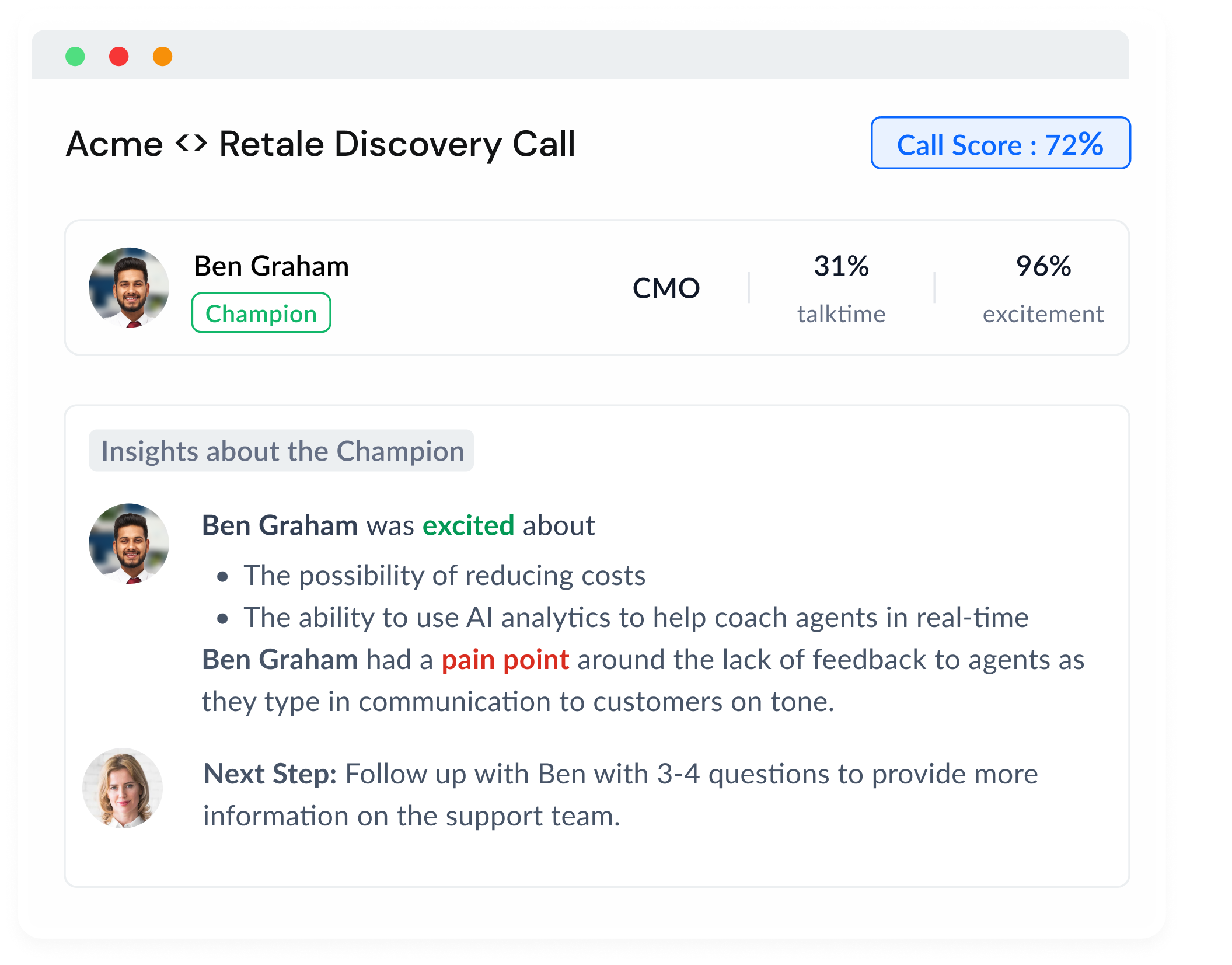The world of sales is constantly evolving, with new strategies and techniques emerging to help sales teams close deals more effectively. One such methodology is the MEDDIC sales process, which has gained significant traction in recent years. In this blog post, we will deep-dive into the MEDDIC sales process, understand its key components, and explore how it can benefit your sales team.
What is the MEDDIC Sales Process?
MEDDIC is an acronym that stands for Metrics, Economic Buyer, Decision Criteria, Decision Process, Identify Pain, and Champion. The MEDDIC sales methodology is a structured, customer-centric approach that focuses on understanding the prospect's needs and aligning the sales pitch with their specific requirements. This method helps sales reps close deals by giving them important information about how the prospect makes decisions.
The Six Key Components of the MEDDIC Sales Process
Metrics (M)
Metrics are the quantifiable measurements that prospects use to evaluate the success of a solution. Sales teams must identify and understand the key performance indicators (KPIs) that matter to their prospects. By demonstrating how your product or service will positively impact these KPIs, you can create a compelling case for investment.
Economic Buyer (E)
The economic buyer is the individual or group responsible for making the final purchasing decision. Identifying and engaging with this person is crucial for securing a deal. Building a relationship with the economic buyer helps ensure that you understand their priorities and can present your solution in a way that aligns with their goals.
Decision Criteria (D)
Decision criteria are the factors that prospects consider when evaluating different solutions. These can include aspects such as price, features, support, and vendor reputation. Sales teams must understand their prospect's decision criteria and tailor their pitch accordingly, highlighting the unique selling points that make their product or service the best choice.
Decision Process (D)
The decision process refers to the steps that prospects go through when making a purchasing decision. It includes everything from initial research to final approval. Understanding the decision process allows sales teams to anticipate potential roadblocks, tailor their approach, and support the prospect throughout their journey.
Identify Pain (I)
Identifying the prospect's pain points is essential for crafting a tailored solution that addresses their specific needs. Sales teams should ask questions to understand the problems potential customers face. They should also demonstrate how their product or service can provide solutions to these issues.
Champion (C)
A champion is an internal advocate within the prospect's organization who supports your solution and can influence the decision-making process. Building a good bond with a champion can greatly improve your chances of sealing a deal. Developing a strong relationship with a champion can significantly increase your likelihood of closing a deal. They can help you comprehend how the organization operates and ensure that decision-makers remember your solution.
Benefits of the MEDDIC Sales Process
By implementing the MEDDIC sales process, your sales team can:
- Improve sales predictability and forecasting accuracy
- Increase the deal size and shorten sales cycles
- Enhance customer relationships by focusing on their needs and pain points
- Better qualify leads and prioritize high-value opportunities
- Encourage a more structured, data-driven approach to sales
Questions to Uncover the MEDDIC Components
Metrics (M) - To identify the metrics that matter to your prospect, ask:
- What KPIs do you use to measure success in your organization?
- How do you currently track these KPIs?
- What improvements would you like to see in these metrics?
- How does your organization define a successful implementation?
Economic Buyer (E) - To identify the economic buyer, consider asking:
- Who is ultimately responsible for making the final decision on this purchase?
- Can you describe their role in the organization?
- What are the key priorities or concerns for the economic buyer when evaluating solutions?
Decision Criteria (D) - To understand the prospect's decision criteria, ask:
- What factors do you consider when comparing different solutions?
- How important are aspects such as price, features, support, and vendor reputation in your decision-making process?
- Do we need to fulfill any specific criteria or requirements for our solution to be considered?
Decision Process (D) - To gain insight into the prospect's decision process, consider asking:
- Can you walk me through the steps you take when making a purchasing decision?
- Are there any internal processes or approvals required before a final decision can be made?
- How long does the decision process typically take in your organization?
- What potential roadblocks or challenges could we encounter during the decision process?
Identify Pain (I) - To identify the prospect's pain points, consider asking:
- What challenges or issues are you currently facing in your organization?
- How are these challenges impacting your business performance?
- What solutions have you tried so far, and why have they not been successful?
- How would resolving these pain points benefit your organization?
Champion (C) - To identify and build a relationship with a champion, ask:
- Are there any individuals within your organization who would benefit significantly from our solution?
- Who in your organization is most likely to advocate for our product or service?
- How can we best support your champion in promoting our solution internally?
By asking questions, you can learn about each part of the MEDDIC sales process. This helps you customize your approach and improve your chances of closing deals. To ask effective questions, listen carefully and change your questions based on the person's answers. Be ready to think quickly and adjust your line of questioning as needed.
Conclusion
The MEDDIC sales process is a powerful methodology that can help sales teams navigate complex deals and close them more effectively. By focusing on the prospect's needs, understanding their decision-making process, and fostering relationships with key stakeholders, your sales team can secure more deals and drive business growth. Give the MEDDIC sales process a try and watch your sales team's success soar!














.png)





